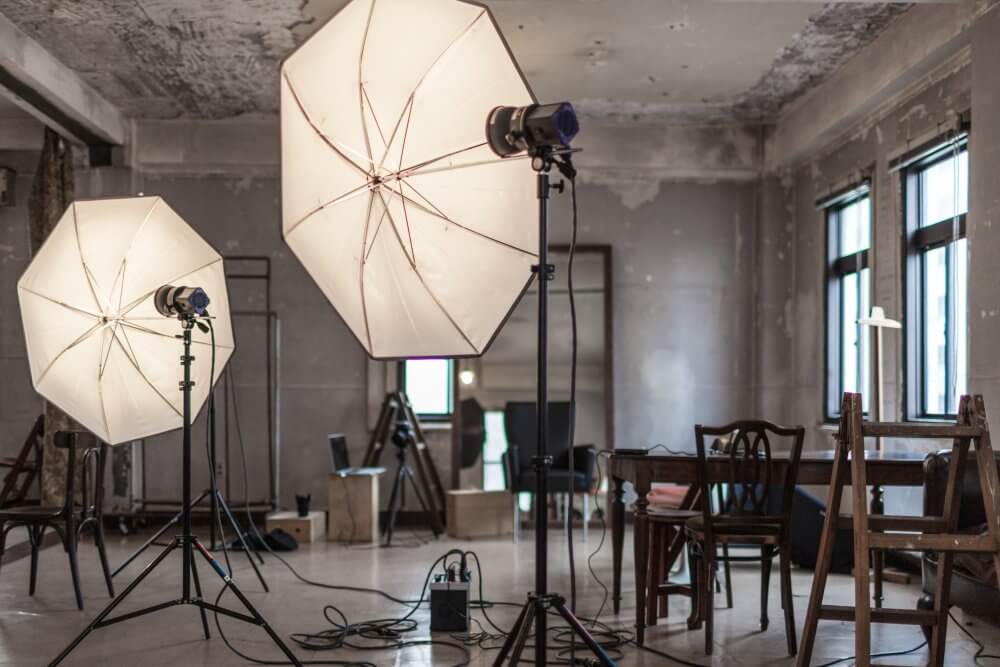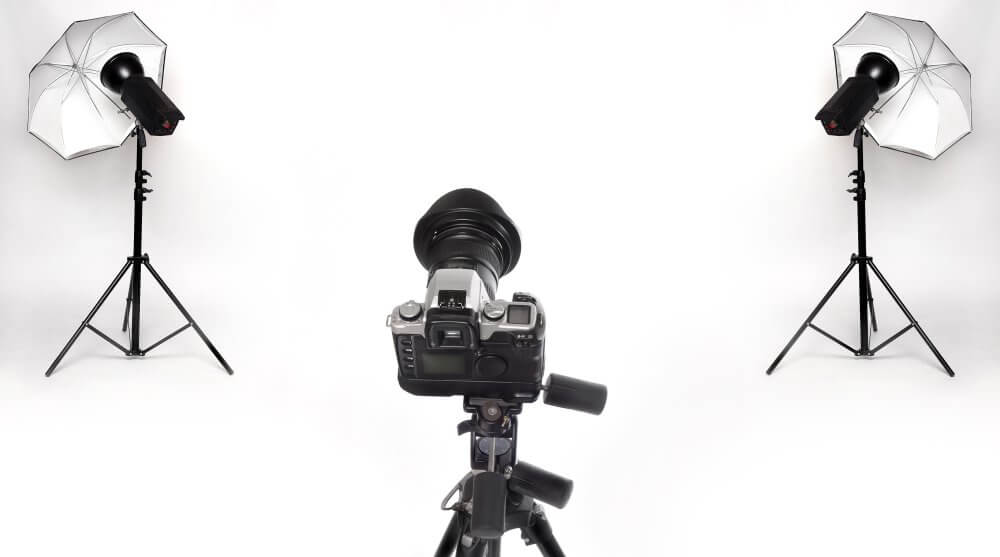
Studio Flash Photography
In addition to continuous light sources as discussed in our article, flash lighting is one of the most important light sources in photography. There are flashes designed for both outdoor and indoor use unlike continuous light, which is mainly used in studio photography.
Some digital SLR cameras have built-in flashes and a hot shoe for adding a flash. A system flash is a self-contained unit with all the electronics, power, sensors, capacitor and flash tube built in.
Flashes are another way to generate high levels of light. In this article you will find useful information about the individual components, the construction forms and how to use them.
The Three Components of a Studio Flash
A studio flash consists of three different components, the flash generator, the flash head and a capacitor.
The flash generator supplies the flash heads with voltage. Most of them use a fixed power supply. The second component is the flash head. This houses a flash tube, a modelling light and a bayonet mount for attaching light shapers such as reflectors, umbrellas and softboxes.
Special flash heads may contain integrated light shapers. Both the flash tube and the modelling light are easily replaceable. It is an advantage to use a conventional light bulb as a modelling light, as replacements are inexpensive.
A capacitor is used to generate enough power for the flash. A capacitor stores electrical energy and releases it quickly or all at once. The capacitor must recharge before each flash. An indicator light shows when the capacitor is charged.
The different types
Roughly speaking, studio flashes can be divided into compact studio flashes and generators with flash heads. These two types both differ in how they look and how they work.
The compact studio flash combines all three components, generator, flash head and compensator into one. The second type has a generator and a flash head that are separated from each other and are connected by a cable. This design makes it possible to cover a large distance between the individual components. This means that the flash head can be placed high up or in places that are difficult to reach, although the generator remains within easy reach, and it can be readjusted easily. This design also makes it possible to supply several flash heads.
The generator can supply up to four flash heads simultaneously. Normally the power is distributed evenly to the flash heads, but special generators can deliver their energy asymmetrically.

Use of Studio Flashes
As the name suggests, studio flashes are mainly used indoors or in studios alongside continuous lighting. They are usually mains powered, except for a few battery powered models.
Compact studio flashes are usually less powerful than generators with an external flash head, but they are perfectly adequate for portraits and smaller products. Their output is between 125- and 1000-watt seconds. Generators with separate flash heads can achieve outputs between 600- and 10,000-watt seconds and are therefore able to light large areas and long distances.
The prices often reflect the performance of the flashes, for example, a compact studio flash is a lot cheaper than a generator with a flash head.
Regardless of which flash system you use it is important that you can adjust their light intensity. This allows you to set the aperture and control the creative elements of the image.
Triggering an External Studio Flash Unit
Unlike an integrated flash or external system flash, the studio flash will only communicate the timing of the flash rather than any exposure data with the camera.
There are several ways to connect the camera to a studio flash. A sync cable is often included with the flash, but it is rather awkward to use and it also poses a tripping hazard.
Furthermore, a sensor built into the studio flash makes it possible to generate a synchronous triggering with the integrated flash of the camera. This sensor recognises when the integrated flash has been triggered and then it triggers the external flash at the same time. The camera and flash must be orientated in a way that they can communicate. If the studio flashes are positioned too sideways or too far back they can no longer detect the flash signal from the camera. This problem can be corrected with an attachable system flash, as this can be aligned with the direction of the studio flash. Another solution is an infrared trigger, which provides the sensor with the signal for triggering. The infrared trigger should not be pointed at anyone when taking pictures of people, as it can produce red eyes.
Conclusion
A studio flash is the most powerful option, however, it is usually more expensive. A flash generator with a flash requires a large investment, as you are not just buying a studio flash, but also a flash system.
The generator with its external flash heads is more versatile than the compact studio flash. It can supply several flash heads simultaneously and offers lots of flexibility when positioning the flash heads. Before buying a studio flash you should think about what you will need it for and also how often you would need to use it. In the context of hobby photography, a compact studio flash is sufficient in most cases despite its lower output. They can be found at reasonable prices and they are ideal for flash photography beginners.
